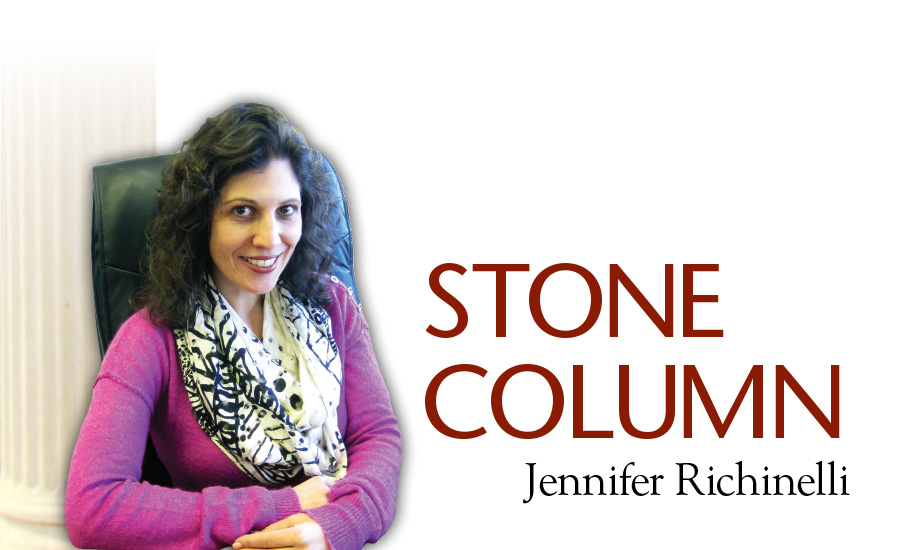Whether in sports, marriage, at work or other areas of life, teamwork is often crucial to achieving an end result. It is also a great way to bond and strengthen relationships between those involved through communication and a better understanding of each other’s role. More often than not, it is rewarding when hard work between two individuals or a group accomplishes a set goal.
Recently, I attended a MIA+BSI New York Metro Chapter event, which was hosted by Atlas Marble and Granite in Springfield, NJ. The event included two sessions, which each earned participants one CEU credit. In the session entitled “Partnering with Natural Stone Countertop Fabricators & Distributors for Increased Sales,” Marco Duran of Atlas Marble and Granite and Buddy Ontra of
Ontra Stone Concepts in Bridgeport, CT, explained to a group of architects and designers the importance of teamwork when working on a stone design. “The relationship between you and us is really important so expectations are clear and met,” said Duran.
Duran and Ontra went on to stress to their audience the importance of understanding the products they are specifying and knowing the difference between them. For example, Duran explained why fabricators charge more for quartzite. “It’s harder than granite and it takes longer to cut,” he said. “We have to use different tooling. You have to explain to your client — convey to them there are different expectations. It’s harder. It’s not granite.”
Additionally, Ontra explained his pricing structure to the group. “It’s the material plus labor,” he said. “Square foot pricing is hard to make.”
The session was designed to educate the A&D community on the benefits of working along with their fabricator and stone supplier to ensure a successful project. The second session actually gave participants the opportunity to tour the fabrication facility to observe the step-by-step process to fabricate a countertop using manual and digital equipment. With a better understanding of the production process, architects and designers can appreciate the products more and share their knowledge with their clients.
The topic of education continually comes up during the various fabricator forums at trade shows, as well as educational workshops held throughout the country each year. The more architects, designers and homeowners learn about the characteristics of the different types of natural stone and what goes into fabricating these materials, it will only make the entire design/installation process easier. In this issue of Stone World, we feature a roundtable discussion with several architects about designing with stone beginning on page 88. You will see participants see the benefits of communicating with their supplier.
“Working with a supplier early in the design process has great value,” said Jon C. Bernhard, AIA, senior partner at Swaback Partners pllc in Scottsdale, AZ. “I discuss design concept with suppliers early and often. The supplier can advise on size, availability and alternate materials to consider. This expands the potential for better design with material that accommodates or exceeds expectations. Final design is often influenced and altered as a result of the challenges and opportunities presented by the supplier.”








